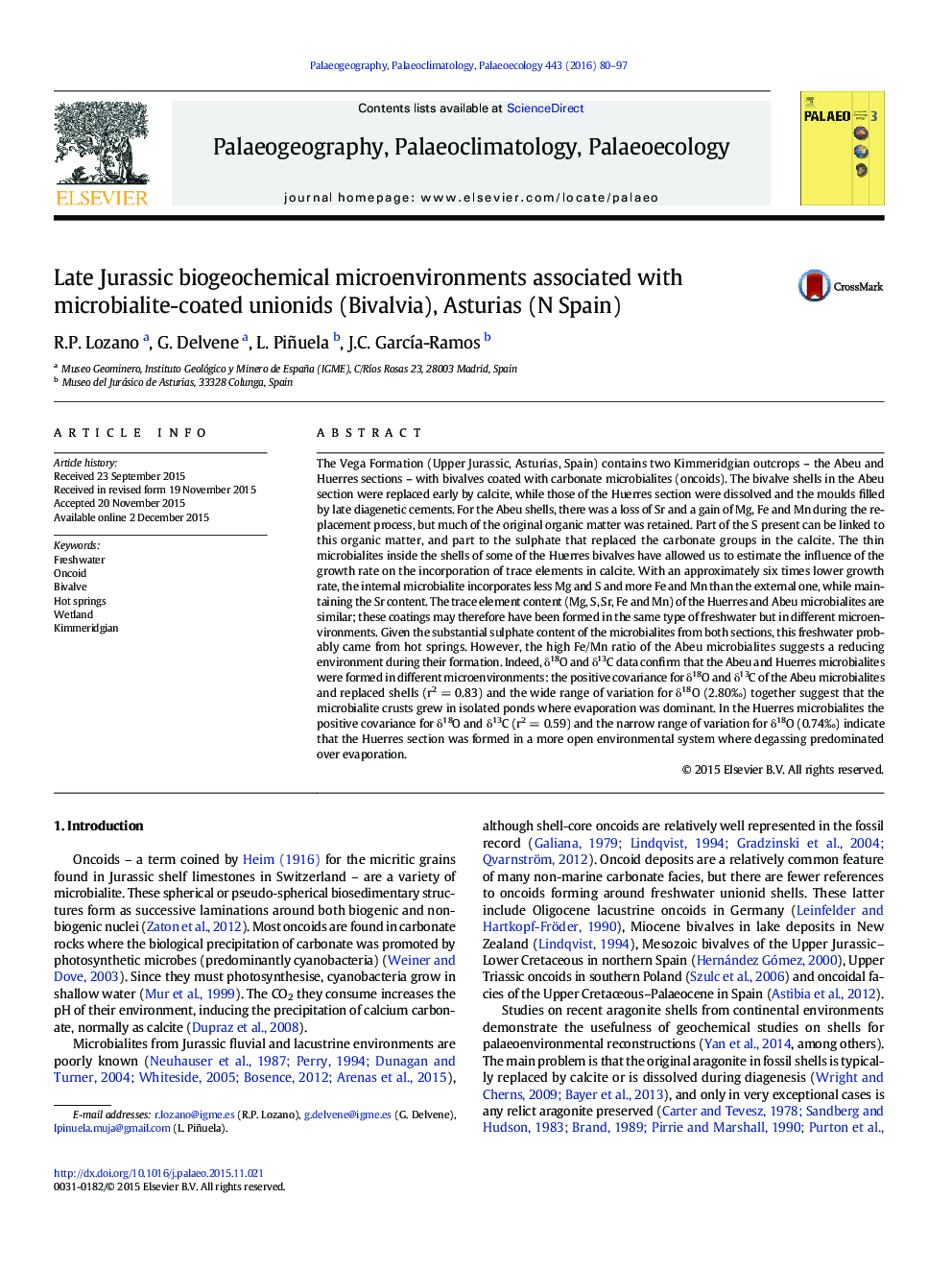| کد مقاله | کد نشریه | سال انتشار | مقاله انگلیسی | نسخه تمام متن |
|---|---|---|---|---|
| 6349222 | 1622148 | 2016 | 18 صفحه PDF | دانلود رایگان |
عنوان انگلیسی مقاله ISI
Late Jurassic biogeochemical microenvironments associated with microbialite-coated unionids (Bivalvia), Asturias (N Spain)
دانلود مقاله + سفارش ترجمه
دانلود مقاله ISI انگلیسی
رایگان برای ایرانیان
کلمات کلیدی
موضوعات مرتبط
مهندسی و علوم پایه
علوم زمین و سیارات
فرآیندهای سطح زمین
پیش نمایش صفحه اول مقاله

چکیده انگلیسی
The Vega Formation (Upper Jurassic, Asturias, Spain) contains two Kimmeridgian outcrops - the Abeu and Huerres sections - with bivalves coated with carbonate microbialites (oncoids). The bivalve shells in the Abeu section were replaced early by calcite, while those of the Huerres section were dissolved and the moulds filled by late diagenetic cements. For the Abeu shells, there was a loss of Sr and a gain of Mg, Fe and Mn during the replacement process, but much of the original organic matter was retained. Part of the S present can be linked to this organic matter, and part to the sulphate that replaced the carbonate groups in the calcite. The thin microbialites inside the shells of some of the Huerres bivalves have allowed us to estimate the influence of the growth rate on the incorporation of trace elements in calcite. With an approximately six times lower growth rate, the internal microbialite incorporates less Mg and S and more Fe and Mn than the external one, while maintaining the Sr content. The trace element content (Mg, S, Sr, Fe and Mn) of the Huerres and Abeu microbialites are similar; these coatings may therefore have been formed in the same type of freshwater but in different microenvironments. Given the substantial sulphate content of the microbialites from both sections, this freshwater probably came from hot springs. However, the high Fe/Mn ratio of the Abeu microbialites suggests a reducing environment during their formation. Indeed, δ18O and δ13C data confirm that the Abeu and Huerres microbialites were formed in different microenvironments: the positive covariance for δ18O and δ13C of the Abeu microbialites and replaced shells (r2 = 0.83) and the wide range of variation for δ18O (2.80â°) together suggest that the microbialite crusts grew in isolated ponds where evaporation was dominant. In the Huerres microbialites the positive covariance for δ18O and δ13C (r2 = 0.59) and the narrow range of variation for δ18O (0.74â°) indicate that the Huerres section was formed in a more open environmental system where degassing predominated over evaporation.
ناشر
Database: Elsevier - ScienceDirect (ساینس دایرکت)
Journal: Palaeogeography, Palaeoclimatology, Palaeoecology - Volume 443, 1 February 2016, Pages 80-97
Journal: Palaeogeography, Palaeoclimatology, Palaeoecology - Volume 443, 1 February 2016, Pages 80-97
نویسندگان
R.P. Lozano, G. Delvene, L. Piñuela, J.C. GarcÃa-Ramos,